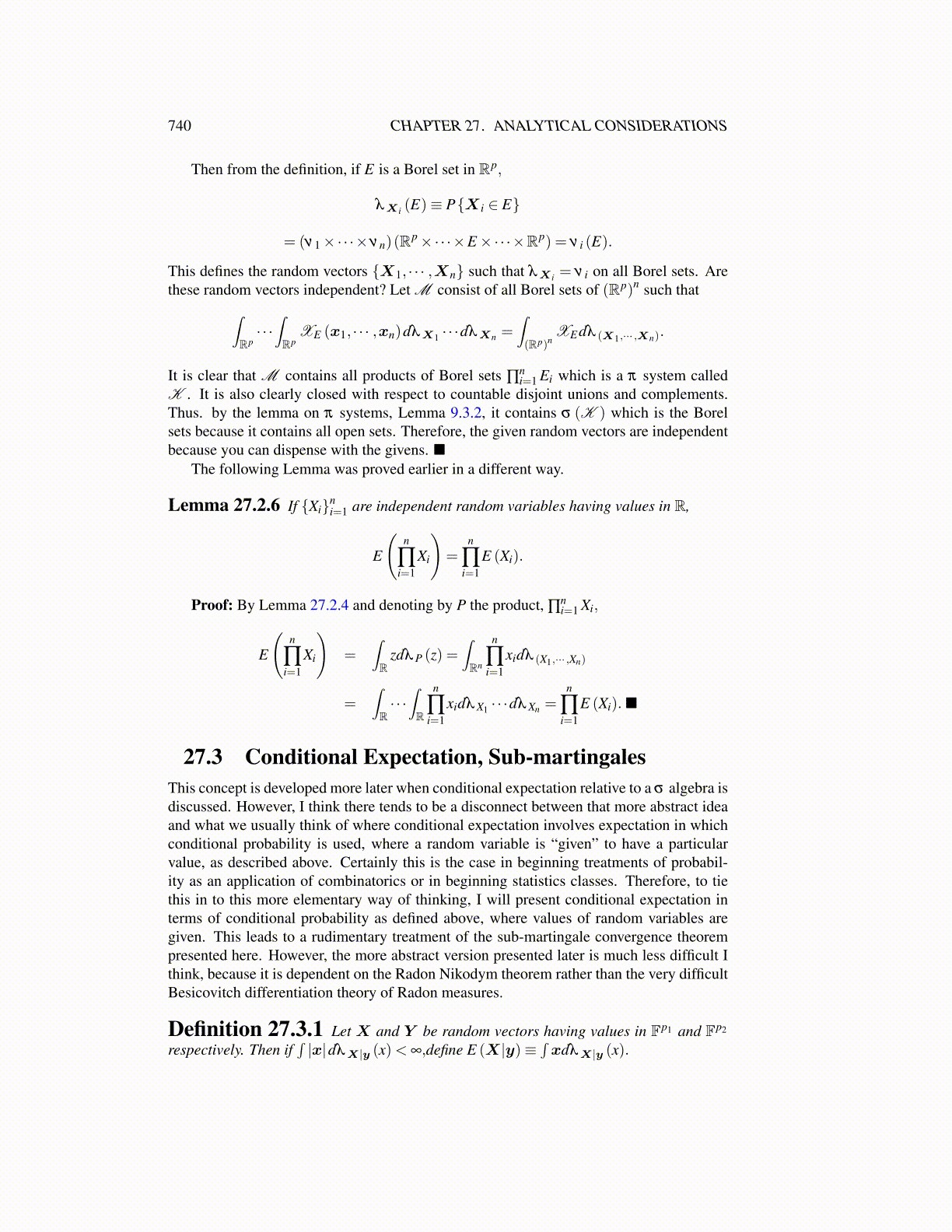
740 CHAPTER 27. ANALYTICAL CONSIDERATIONS
Then from the definition, if E is a Borel set in Rp,
λX i (E)≡ P{X i ∈ E}
= (ν1×·· ·×νn)(Rp×·· ·×E×·· ·×Rp) = ν i (E).
This defines the random vectors {X1, · · · ,Xn} such that λX i = ν i on all Borel sets. Arethese random vectors independent? Let M consist of all Borel sets of (Rp)n such that∫
Rp· · ·∫Rp
XE (x1, · · · ,xn)dλX1 · · ·dλXn =∫(Rp)n
XEdλ (X1,··· ,Xn).
It is clear that M contains all products of Borel sets ∏ni=1 Ei which is a π system called
K . It is also clearly closed with respect to countable disjoint unions and complements.Thus. by the lemma on π systems, Lemma 9.3.2, it contains σ (K ) which is the Borelsets because it contains all open sets. Therefore, the given random vectors are independentbecause you can dispense with the givens. ■
The following Lemma was proved earlier in a different way.
Lemma 27.2.6 If {Xi}ni=1 are independent random variables having values in R,
E
(n
∏i=1
Xi
)=
n
∏i=1
E (Xi).
Proof: By Lemma 27.2.4 and denoting by P the product, ∏ni=1 Xi,
E
(n
∏i=1
Xi
)=
∫R
zdλ P (z) =∫Rn
n
∏i=1
xidλ (X1,··· ,Xn)
=∫R· · ·∫R
n
∏i=1
xidλ X1 · · ·dλ Xn =n
∏i=1
E (Xi).■
27.3 Conditional Expectation, Sub-martingalesThis concept is developed more later when conditional expectation relative to a σ algebra isdiscussed. However, I think there tends to be a disconnect between that more abstract ideaand what we usually think of where conditional expectation involves expectation in whichconditional probability is used, where a random variable is “given” to have a particularvalue, as described above. Certainly this is the case in beginning treatments of probabil-ity as an application of combinatorics or in beginning statistics classes. Therefore, to tiethis in to this more elementary way of thinking, I will present conditional expectation interms of conditional probability as defined above, where values of random variables aregiven. This leads to a rudimentary treatment of the sub-martingale convergence theorempresented here. However, the more abstract version presented later is much less difficult Ithink, because it is dependent on the Radon Nikodym theorem rather than the very difficultBesicovitch differentiation theory of Radon measures.
Definition 27.3.1 Let X and Y be random vectors having values in Fp1 and Fp2
respectively. Then if∫|x|dλX|y (x)< ∞,define E (X|y)≡
∫xdλX|y (x).